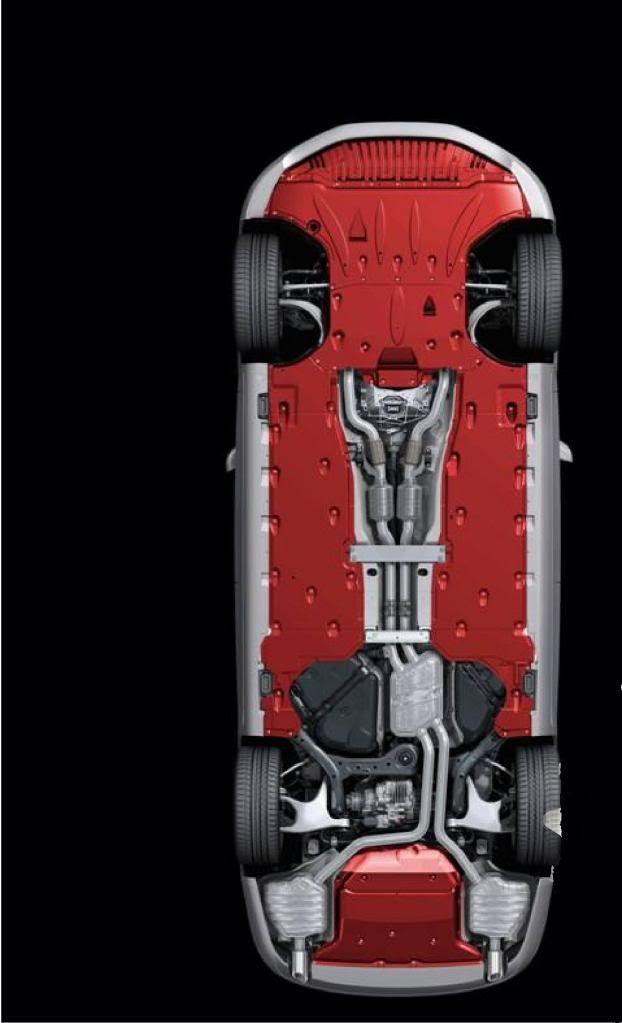Weird Aerodynamics - Myths and Misconceptions
There are a few myths which have been endlessly repeated by such media as the
Fast & Furious series to the point they became ingrained in "automotive common knowledge". Which should have been no great deal, but in an age of credit crunch and inflated fuel prices they are not as innocuous as they seem.
Myth #1 - Wings and spoilers are the same thing.
Wrong.
Wings had been invented some time ago to provide downforce to
rear-wheel-driven race cars having simultaneously amidships-mounted engines, rear-biased weight distribution, different sizes of tyres front to rear and horrible oversteering.
From all points of view, on FWD / AWD cars with front engines, weight distribution biased towards the front and generally understeering in OEM condition (people go to great lengths with wheel spacers, ARBs, sports suspensions and so on to
induce oversteering) they are worse then useless: they generate drag. Race cars have the power to compensate for the drag. And fuel paid for by the team.
Spoilers are slightly different, although they look similar: they keep the airflow over the back of the car, preventing turbulence over the rear and therefore lift, and also reduce drag in the manner of a "fastback".
The higher a spoiler is, the more efficient. Small spoilers fitted on the boot lid of a 3-box car are useless.
Our OEM spoiler is flush with the roof and functional.
Myth #2 - Aerodynamic devices and airfoils are strictly for racing.
Aerodynamic devices serve many purposes: they can reduce the drag and therefore the fuel consumption needed for achieving the same speeds, they can aid in stability at high speed, and, last, but not least,
aid in engine bay cooling.
For example, the engine bay and SMIC bay in a LC/LFR/LCR do not have the plastic undertrays simply to protect the engine from mud and dirt, neither are the bumpers designed as they are simply for looks: the shape of the bumper (stepped inside where the lower grilles are) creates a high pressure pocket at speed, while the undertrays smooth out the airflow below the car, allowing the air to flow quicker and with lower pressure. The air goes into the radiator and SMIC in a high pressure area and exhausts into a low pressure flow under the car - the forward movement of the car becomes a pump which sucks the cooling air out. (Just how did people think the ICs cooled themselves through such a small, hand-sized opening, and even while not having any sort of fan as the coolant radiator does?)
Myth #3 - Aerodynamics work only at high speeds.
This should have been busted a few decades ago, by the generation of our grandparents

Aerodynamic devices act even at speeds as low as 60 km/h (under 40 mph) - anyone who had watched closely a FIA GT race on a tight and complex track saw the sharp hairpin curves (when aerodynamic stability is needed most) are taken at low speed. (Off-topic but it should be noted: the highest stress in a race car does not come from speed runs, but from the continuous cycles of acceleration to 250-300 km/h on straights, braking from 200-250 km/h to 60-80 km/h just before the curve, accelerating again after the apex... our forum comrades who did trackdays saw their tyres and brake pads almost melting themselves like in a thousand-mile trip after a few runs. GT racers change a few sets of tyres per run.)
The generation who took the drawing board just before WWII understood aerodynamics would
help even the low-powered cars the general population could afford back then, even at ridiculous speeds from the point of view of a modern man. Adlers, Tatras or VW Bugs were quick for their day (although slow for modern drivers),
but achieved their speed with the sort of engine power that would make even the slowest modern econobox laugh it's ass off. And, in practice, they would have needed only a fraction of
that power to run at 100 km/h for all day long.
As afterwards came decades of cheap fuel, busy motorways and baroque designs, car aerodynamics slowly began to mean "the noble art of making yourself a cheap ricer also known as a brainless chav"

Regards,
~Nautilus








